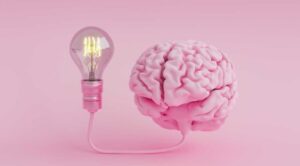The human brain is unique, unlike anything else, even its attractiveness compared to other organs can be questioned. But the greatest structure in the universe is neither black holes nor celestial dynamics… it is the “human brain”. The operating system performance of this 1400 mg average hardware has not yet been achieved, let alone approached.
Experiences
Our brain keeps us ready to respond to what we see and hear – the world around us. The brain is at the center of vast and complex communication networks that constantly gather information from both the outside world and our bodies. As it interprets this information, it creates experiences. It is not known exactly how the electrical activity in our brain translates into experience, but the role of our sensory organs in this process is clear. Each sense organ is specialized to deal with a different type of stimulus. For example, the eyes are sensitive to light and the ears to sound waves. The signals from the sensory organs are processed by the brain which determines what kind of experience they will produce. Our experiences are the cornerstone of our behavior. Our behavioral responses to the stimuli we feel with our five senses are the combined response of our central and autonomic nervous system.
Today, neuroscience is used to scientifically uncover certain basic emotions by physiologically and neurologically measuring our brain’s behavioral responses. Neuroscience today is at the forefront of research into the human brain’s decision-making processes, social interaction and emotions. In this context, neuromarketing, a sub-branch of social neuroscience, offers a new window into the world of marketing. The most striking feature of neuromarketing research is its ability to measure the emotional response of consumers to brands and products within the boundaries of science. While the emotional dimension that drives the behavioral dimension comes to the forefront in the communication that brands establish with their customers, traditional research methods are insufficient to accurately measure the emotional dimension scientifically.
Why Neuromarketing?
The importance of expressing emotions is that people are interdependent on each other and what one person does necessarily affects the others. Therefore, it is very important and necessary to understand each other’s emotions within society. In the world of marketing, it is certain that brands need to understand and recognize the emotions of their current or potential consumers. For the objective measurement of an emotion, it is clear that there is a need to turn to neuromarketing beyond conventional techniques.




